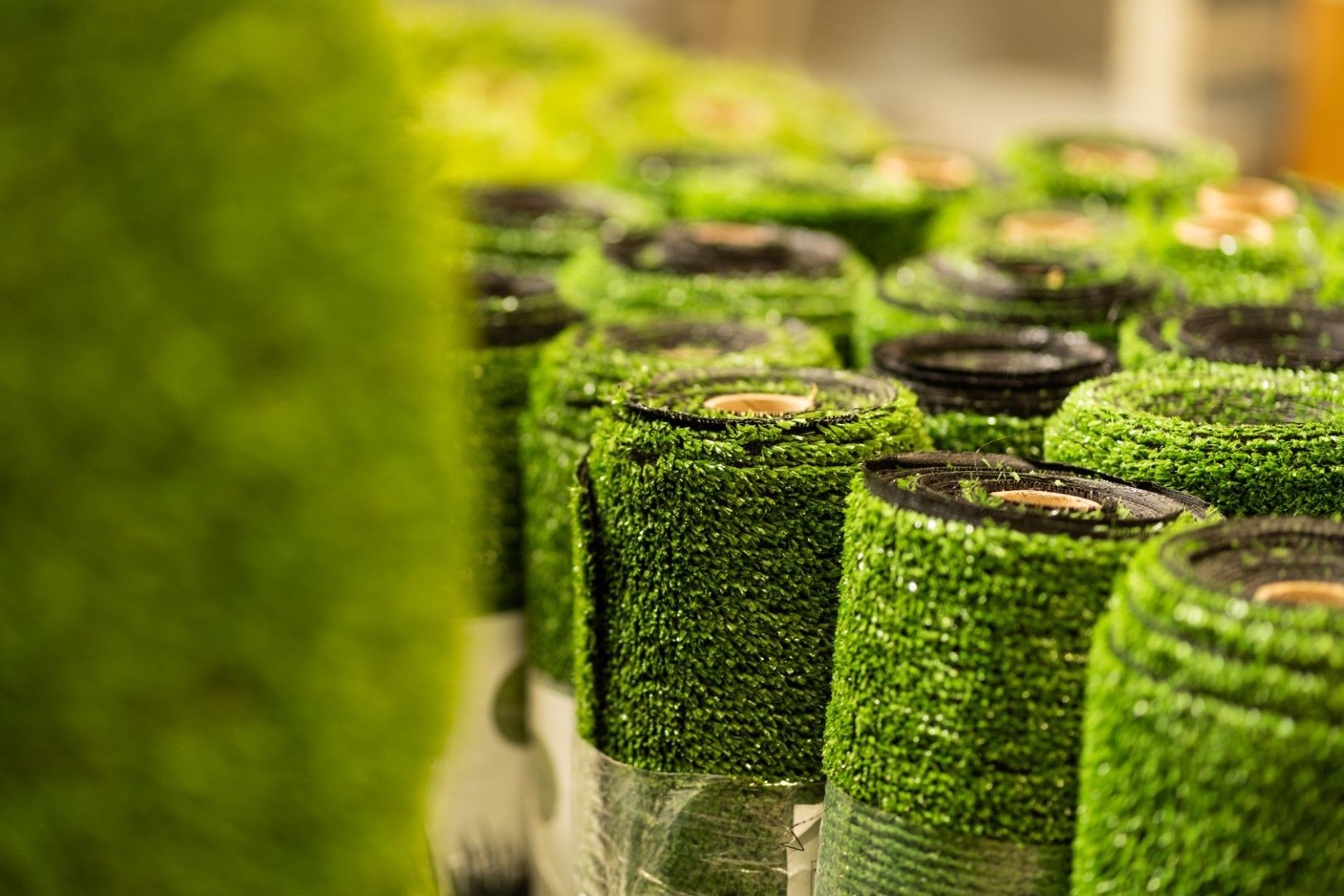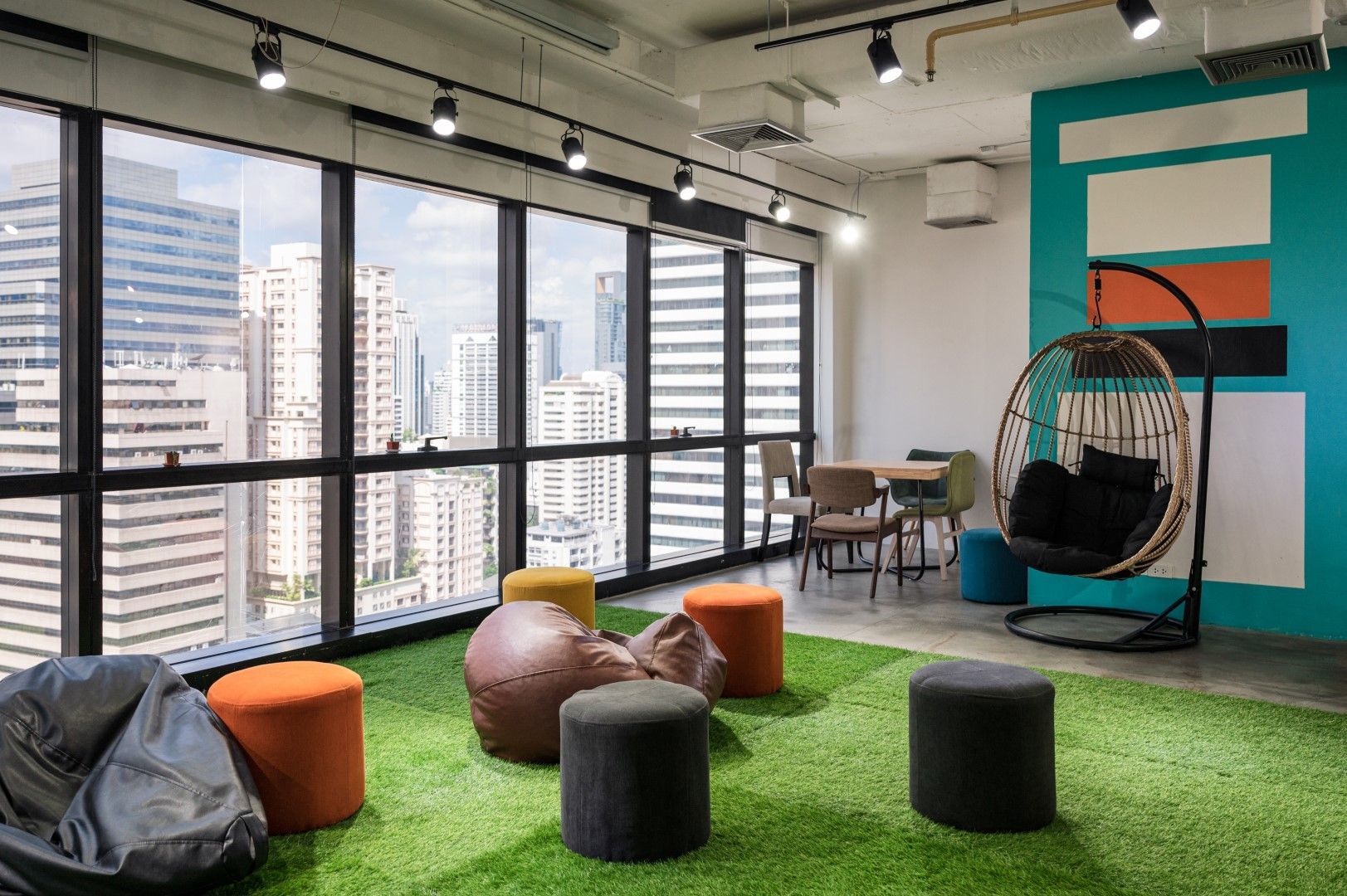FAQs about Artificial Turf

What is artificial turf?
Artificial turf, also known as synthetic grass or fake grass, is a manufactured surface designed to resemble natural grass. It is made from synthetic fibers that mimic the look and feel of real grass.
How is artificial turf made?
Artificial turf is typically made from a combination of materials such as polyethylene or polypropylene fibers, backing material, and infill (e.g., sand or rubber granules). These components are woven or tufted together to create a durable and realistic-looking turf.

What are the benefits of artificial turf over natural grass?
Artificial turf offers several advantages, including reduced maintenance requirements, water conservation, durability, year-round usability, no need for pesticides or fertilizers, and a consistent appearance regardless of weather conditions.
Is artificial turf safe for children and pets?
Yes, artificial turf is designed with safety in mind. It is made from non-toxic materials, and many products have additional features like soft padding or antimicrobial treatments to enhance safety and hygiene. However, it's important to choose high-quality turf and follow manufacturer guidelines for installation and maintenance.
How long does artificial turf last?
The lifespan of artificial turf can vary depending on factors such as usage, maintenance, and quality. On average, well-maintained artificial turf can last anywhere from 10 to 20 years or more. Choosing high-quality turf, following proper maintenance practices, and using it within its recommended purposes can help maximize its longevity.
Can I install artificial turf myself?
While it is possible to install artificial turf as a DIY project, it requires careful planning and preparation. It's recommended to follow manufacturer instructions or consult with professionals to ensure proper installation and avoid potential issues.
How do I clean and maintain artificial turf?
Regular maintenance for artificial turf includes brushing to prevent matting, removing debris, rinsing with water to remove dust and pet waste, and occasional deep cleaning. Avoid using harsh chemicals or excessive force that could damage the turf.
Does artificial turf get hot in the sun?
Artificial turf can become warmer than natural grass under direct sunlight. However, advancements in turf technology have led to the development of heat-reducing features like specialized infill or lighter-colored fibers to minimize heat absorption.
Can I install artificial turf on uneven surfaces?
Yes, artificial turf can be installed on uneven surfaces. However, proper site preparation, including leveling and addressing drainage issues, is crucial to ensure a stable and long-lasting installation.
Can I use artificial turf for sports fields?
Yes, artificial turf is widely used in sports fields due to its durability, low maintenance requirements, and consistent playability. It is commonly found in soccer fields, football fields, golf courses, and other sporting arenas.
Is artificial turf suitable for areas with heavy rainfall or high humidity?
Artificial turf is designed to handle various weather conditions, including heavy rainfall and high humidity. It features drainage systems that allow water to flow through, preventing waterlogging and promoting proper water management.
Can I install artificial turf around trees or other landscaping features?
Yes, artificial turf can be installed around trees and other landscaping features. However, it's important to leave space for tree growth and ensure proper drainage to avoid potential issues with root health and water pooling.
Will artificial turf fade over time?
High-quality artificial turf is designed to resist fading caused by UV exposure. It is manufactured with UV stabilizers that help maintain its color and appearance even with prolonged sun exposure.
Can I use artificial turf in areas with heavy foot traffic?
Yes, artificial turf is suitable for areas with heavy foot traffic. It is highly durable and designed to withstand wear and tear, making it a popular choice for high-traffic areas such as playgrounds, parks, and commercial spaces.
Does artificial turf require infill material?
While infill material is not always necessary for all types of artificial turf, it is commonly used to provide stability, support the fibers, and enhance performance. The type and amount of infill required may vary depending on the specific turf product and its intended use.
Can I install artificial turf over an existing lawn or concrete surface?
Yes, artificial turf can be installed over existing lawns or concrete surfaces. However, proper preparation, including thorough cleaning, leveling, and possibly adding an underlayment, may be required to ensure a smooth and stable installation.
Is artificial turf suitable for rooftop gardens or balconies?
Yes, artificial turf is an excellent option for rooftop gardens or balconies. It can transform these spaces into green and usable areas, providing an aesthetically pleasing environment without the need for traditional soil-based landscaping.
Can I install artificial turf in extreme weather conditions like freezing temperatures or hot climates?
Artificial turf is designed to withstand a wide range of weather conditions. It can handle freezing temperatures as well as hot climates, without the risk of freezing or melting like natural grass.
Does artificial turf harbor pests or insects?
Artificial turf does not provide a conducive environment for pests or insects to thrive. Unlike natural grass, it does not offer food sources or habitats for insects, reducing the likelihood of pest infestations.
Can I recycle artificial turf once it reaches the end of its lifespan?
Yes, artificial turf can be recycled. Many manufacturers offer recycling programs or work with specialized facilities to ensure that used turf is properly recycled or repurposed, reducing its environmental impact.
Can you put artificial turf directly on dirt?
It is generally not recommended to install artificial turf directly on dirt. Proper preparation is essential for a long-lasting and stable installation. Typically, a base layer of crushed stone or a specialized base material is installed to create a solid foundation before laying the artificial turf.
What is the difference between artificial grass and artificial turf?
The terms "artificial grass" and "artificial turf" are often used interchangeably to refer to the same product. Both terms describe synthetic surfaces that mimic the appearance of natural grass. Artificial grass and artificial turf are made from similar materials and serve the same purpose.
What do you put under artificial turf?
To ensure a stable and well-draining installation, a layer of base material is typically placed under artificial turf. This base material can vary but commonly includes crushed stone, gravel, or specialized base products. The base layer provides support, aids in drainage, and helps prevent the turf from shifting or settling.



